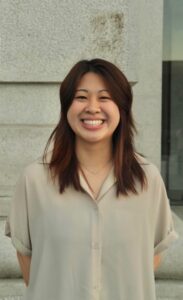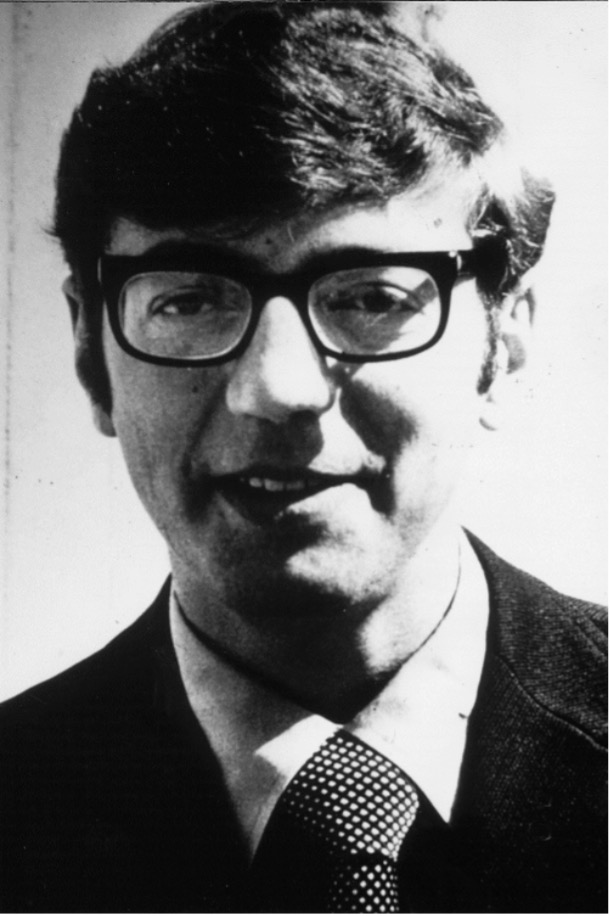
by Brianna Iswono
Brianna Iswono is a third-year undergraduate student at UC Berkeley majoring in chemical engineering. In the Fall 2024 semester, Brianna is working with Roger Eardley-Pryor of the Oral History Center to earn academic credits through Berkeley’s Undergraduate Research Apprentice Program (URAP). URAP provides opportunities for undergraduates to work closely with Berkeley scholars on cutting edge research projects for which Berkeley is world-renowned. This “From the Archives” article emerged from Brianna’s research in the Oral History Center’s long standing Sierra Club Oral History Project.
Laurence I. Moss, who recorded his oral history in 1992, integrated engineering innovation with environmental protection in ways that inspire me as a chemical engineering student who wants to contribute towards sustainability. Today, efforts to reduce carbon emissions and combat climate change are increasingly prominent in academia and technological industries. The surge of various electric cars, solar power installations, and increased sustainability awareness begs the question: how has this shift towards a more green future been feasible? This shift has required, and continues to require, technical developments with environmental goals. Laurence I. Moss was a nuclear engineer who, in the 1960s and 1970s, became a national leader in the Sierra Club. Moss used his technical expertise for advancements in engineering as well as developing processes to prioritize environmental protections.

Laurence I. Moss’s early life and education laid the groundwork for his expertise in engineering, equipping him with the technical knowledge to contribute meaningfully to the nuclear industry. Moss was born in 1935 during the Great Depression. He was raised in Queens and Brooklyn in New York City by parents who, as he said, believed deeply in the “American Dream.” He attended the prestigious Massachusetts Institute of Technology (MIT) where he studied chemical engineering as an undergraduate. Driven by his passions in math and science, he described wanting a career where “people would be judged on their merits and on their ability to contribute.” Continuing to spark his interests and explore new fields, Moss completed a graduate program at MIT in nuclear engineering, a field he was previously unfamiliar with.
Moss’s work on nuclear reactors, particularly at Rockwell International, highlighted his ability to understand and improve cutting-edge technologies, a key skill that later influenced his advocacy for sustainable energy solutions. Prior to Rockwell International, Moss worked for nearly ten years at the Santa Susana nuclear field laboratory in Simi Hills where he designed and constructed various nuclear power reactors. He focused on developing safer nuclear technologies as the key engineer for testing so-called “critical experiments”—that is, low-power nuclear physics experiments conducted with nuclear reactors that avoid producing large amounts of fission products. This work laid a foundation for broader environmental impacts that he pursued in his later career at Rockwell International. Reflecting on his time at Rockwell, Moss shared, ”It was very rewarding too when you spend several months doing a highly theoretical calculation which makes certain assumptions about physical and nuclear properties, and predicts on the basis of these assumptions that a certain result will happen under these unusual circumstances. And then you go out and test it, and indeed that’s exactly what happens.” After acquiring first-hand experience managing nuclear-scale trials and operations, Moss joined the Sierra Club, and his work efforts soon transitioned towards processes that targeted innovative and renewable energy alternatives.
The personal connection Moss had to nature and his growing awareness of environmental issues, such as pollution and habitat destruction, inspired his shift towards engineering solutions that balanced technical progress with environmental preservation. His admiration of the natural environment grew from his youth in a rural setting where he spent most of his time outdoors. Later in life, seeing the effects of pollution in Los Angeles strengthened his belief that engineering should play a role in protecting the environment. Recalling these aspects, especially from his daily commute, Moss shared, “Another influence was the smog in the L.A. Basin. I remember my feelings at the end of the day, usually driving down from the Santa Susana Mountains to the San Fernando Valley and seeing a blanket of smog over the valley. Thinking about living in that polluted environment and how that had to change.” Seeing the impact of pollution firsthand inspired Moss to turn his personal convictions into action by using his engineering knowledge to advocate for environmental protections.
Moss became a prominent figure in the Sierra Club where he leveraged his engineering expertise for environmental advocacy, including influencing key decisions on energy production and infrastructure through a quantitative approach. He encapsulated his values by asserting, “I wanted to know how many pounds, how many tons, how much toxicity, how many people are at risk, what is the probability of distribution for the hazards, the number of people who can be affected by a single incident, and the consequences of that incident.” Moss joined the Sierra Club in 1959, remained active for over fifteen years, and served as the first non-Californian president of the Club from 1973 to 1974. His leadership was characterized by providing data and analytical information to illuminate the economic and environmental trade-offs of energy production and conservation. During his tenure, Moss opposed construction of the Diablo Canyon nuclear power plant in central California, not in opposition to nuclear power, per se, but by emphasizing its potential dangers in an earthquake-prone area as well as concerns about the plant’s long-term sustainability. In Congressional hearings, he also contributed economic analyses to oppose dams in the Grand Canyon, and instead he advocated for nuclear power as a cleaner, more environmentally sustainable, and cost-effective alternative to burning coal or oil. Moss approached this argument by claiming the dams in the Grand Canyon were not necessary for the economic success of the Central Arizona Project (CAP). He shared, “Those dams were not the key factors in subsidizing the Central Arizona Project. One, we did the calculation that the Bureau of Reclamation did and took out both the costs of and the revenue from the two Grand Canyon dams. At the end of the fifty-year period, you ended up with about the same amount of money with the Central Arizona Project subsidized as with the dams in the calculation.” By merging his analytical mind and engineering expertise, Moss played a key role in broadening the Sierra Club’s mission, helping shift its focus strictly from wildlife conservation to address the broader environmental challenges of his time.
The oral history of Laurence I. Moss offers testimony to the crucial role that engineering and technical expertise can play in creating a safer, more environmentally friendly future. His integration of engineering and environmental protection inspires future generations of engineers like me, who hope to contribute to the sustainable engineering industry. Moss’s life, work, and advocacy emphasized deep interconnections between economics, engineering, and environmental action. He serves as a lasting source of inspiration for students and professionals who share his values in the ongoing pursuit for a healthier planet.
ABOUT THE ORAL HISTORY CENTER
The Oral History Center of The Bancroft Library preserves voices of people from all walks of life, with varying political perspectives, national origins, and ethnic backgrounds. We are committed to open access and our oral histories and interpretive materials are available online at no cost to scholars and the public. You can find our oral histories from the search feature on our home page. Search by name, keyword, and several other criteria. Sign up for our monthly newsletter featuring think pieces, new releases, podcasts, Q&As, and everything oral history. Access the most recent articles from our home page or go straight to our blog home.
Please consider making a tax-deductible donation to the Oral History Center if you’d like to see more work like this conducted and made freely available online. As a soft-money research unit of The Bancroft Library, the Oral History Center must raise outside funding to cover its operational costs for conducting, processing, and preserving its oral history work, including the salaries of its interviewers and staff, which are not covered by the university. You can give online, or contact us at ohc@berkeley.edu for more information about our funding needs for present and future projects.